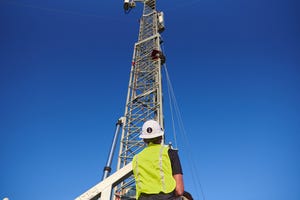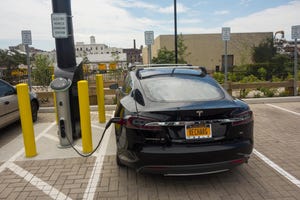Vodafone says Three merger could give us 'talking trainers'
Vodafone has published some truly ambitious visions for what a 5G standalone network could bring, from 3D printed bespoke lipsticks to custom TV show scenarios.

Vodafone and Three are currently waiting to see if their merger will get approved by the powers that be. Arguing that neither company can cover its cost of capital, the operators have promised to invest £11 billion in the UK over ten years to create a standalone (SA) 5G network if the Competition and Markets Authority (CMA) gives its blessing to their union.
The technology has sometimes been hailed by operators as the "true 5G," which will be able to produce new use cases that are not possible with a 4G core. Recently, Three CTO David Hennessy told Light Reading, "All good things with 5G really come with standalone because it gives you all your slicing capability and service creation capability, but in order to slice effectively you have to have a very good network."
He went on to say "standalone 5G allows you to take all the network attributes – like connectivity, latency, connection data, speeds – and move that service creation into the network side of things. Standalone is good, but it's useless unless the 5G networks are good in and of themselves."
Indeed, it seems that one of the arguments Vodafone and Three, along with its parent CK Hutchison, are using to back the merger is the good that will be created by a strong third network of the 5G SA variety – which the companies will not be able to achieve separately.
With a CMA decision still pending, Vodafone has worked with "actionable futurist" Andrew Grill to unveil some truly ambitious visions for what a 5G SA network could bring in the next five-to-seven years.
Talking trainers and custom TV show endings
To ease us in, Vodafone and Grill say video assistant referee use in soccer will become a thing of the past. Its job will be taken by "5G SA-powered chips in match balls, players' boots and on pitches, coupled with multiple angle live feeds from agile robotic cameras."
A mix of 3D printing, AI and 5G technology will, meanwhile, make it possible to create bespoke cosmetics and make-up tailored to a customer's needs and wishes, with 3D printers located at beauty shops. And that's just the beginning.
According to Grill and Vodafone, people will have the option to co-create their own personal AI-powered style guides thanks to "talking trainers and connected clothing powered by 5G." Sadly, we won't quite be able to chat with our sneakers (perhaps 6G will give us that option?). Instead, the talking will be of the digital variety – shoes and clothes will come with embedded chips and collect insights on what new products people with similar tastes are eyeing, harnessing generative AI to give personalized recommendations.
Thanks to 5G SA, viewers will also be able to choose their own outcomes of TV shows, says Vodafone. Using Love Island as an example, "viewers could select which pair of contestants they want to 'couple up.'" Producers would then "be able to use real-life footage of the contestants alongside AI-generated content to generate endless different, personalized outcomes based on the choices of the viewer," all thanks to a 5G SA network.
Leaving aside any queasiness the idea of choose-your-own-reality shows could inspire – or questions as to whether it's wise to gnaw at our connection to reality in this way – 5G SA is not the only piece of technology needed to make these things happen. Needless to say, many of these predictions sound highly ambitious.
Of course, if any readers are finding this article in the future, having applied their 3D-printed lipstick, and wondering idly which two Love Island contestants they should artificially "couple up," they should feel free to poke fun at this story. Or perhaps ask their sneakers to do so.
In the meantime, Vodafone UK CEO Ahmed Essam says, "As a combined business, we'll deliver 5G SA to 99% of the UK population by 2034. Together, we're passionate about introducing the network the UK needs to make this exciting future a reality." It remains to be seen whether the CMA will be swayed.
Read more about:
EuropeAbout the Author(s)
You May Also Like












